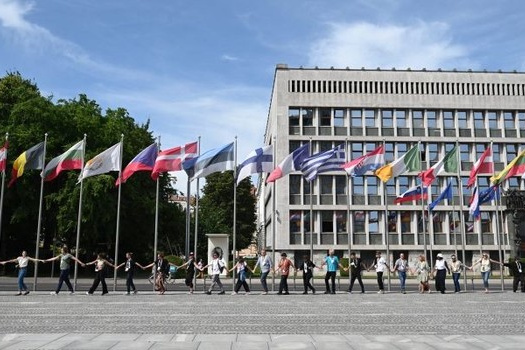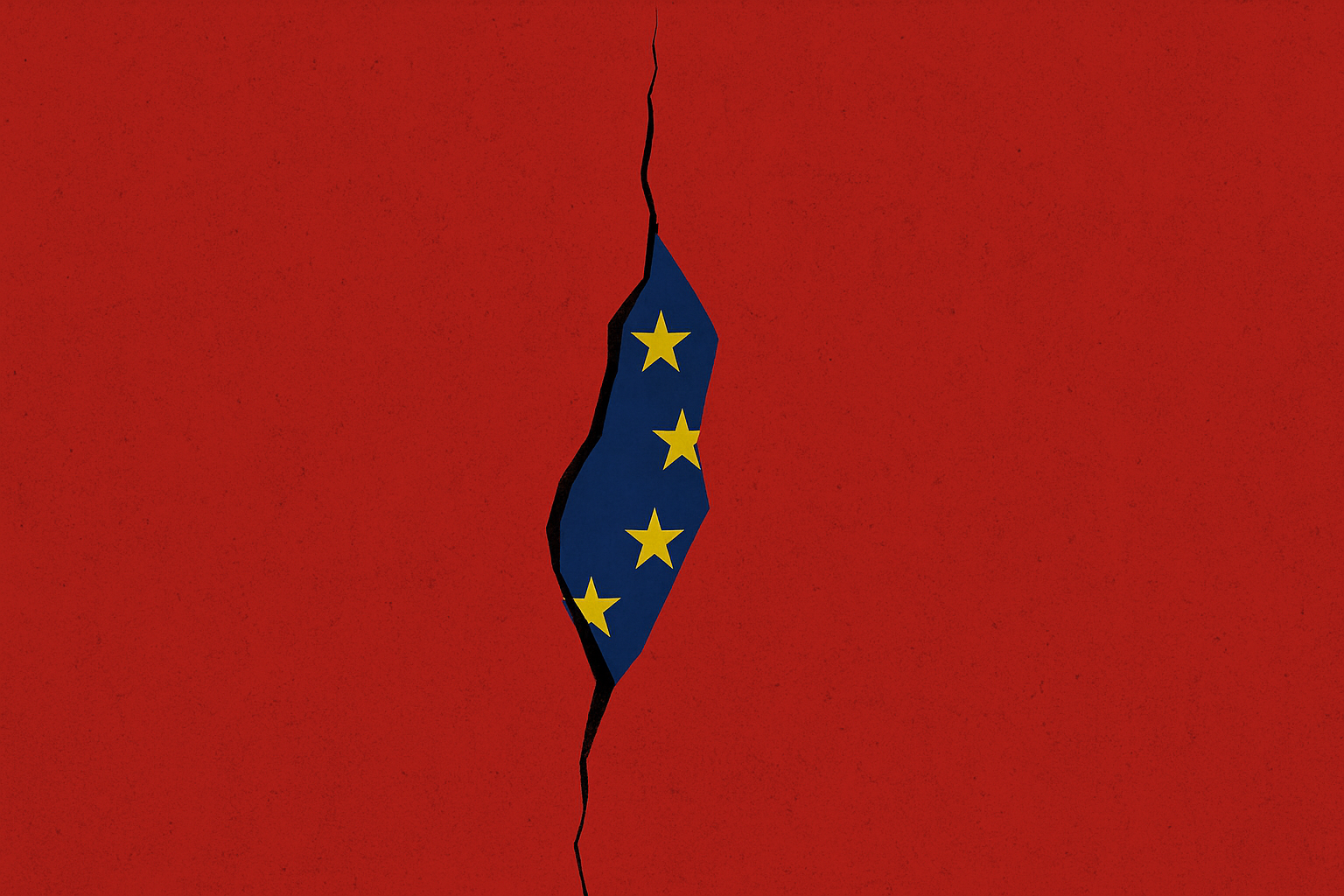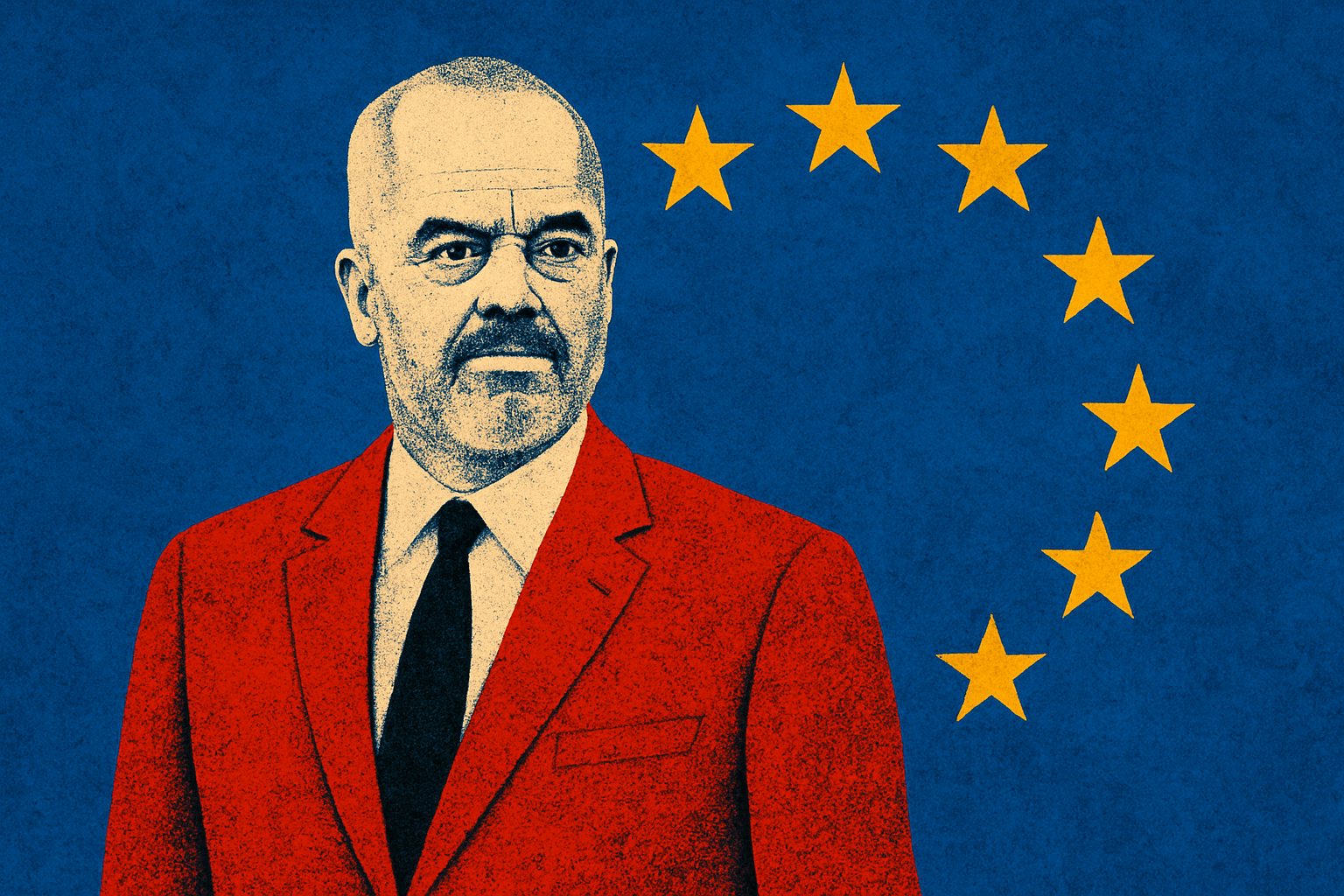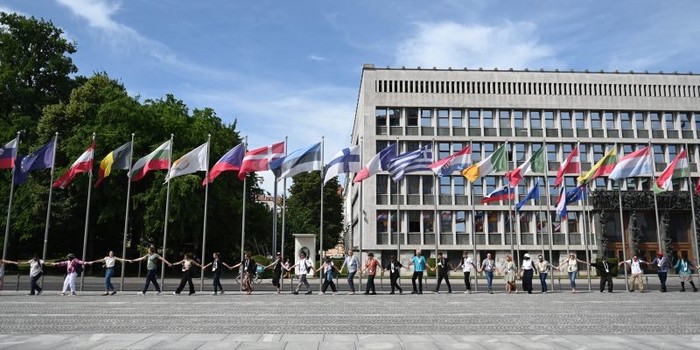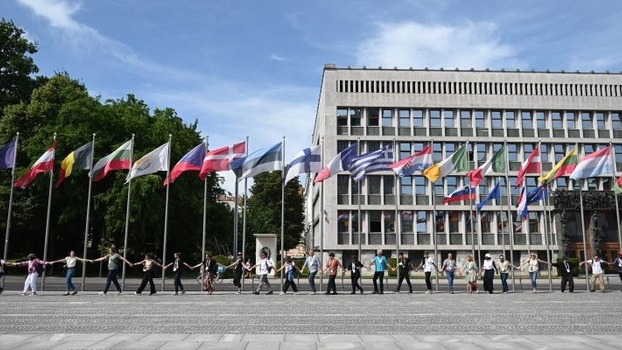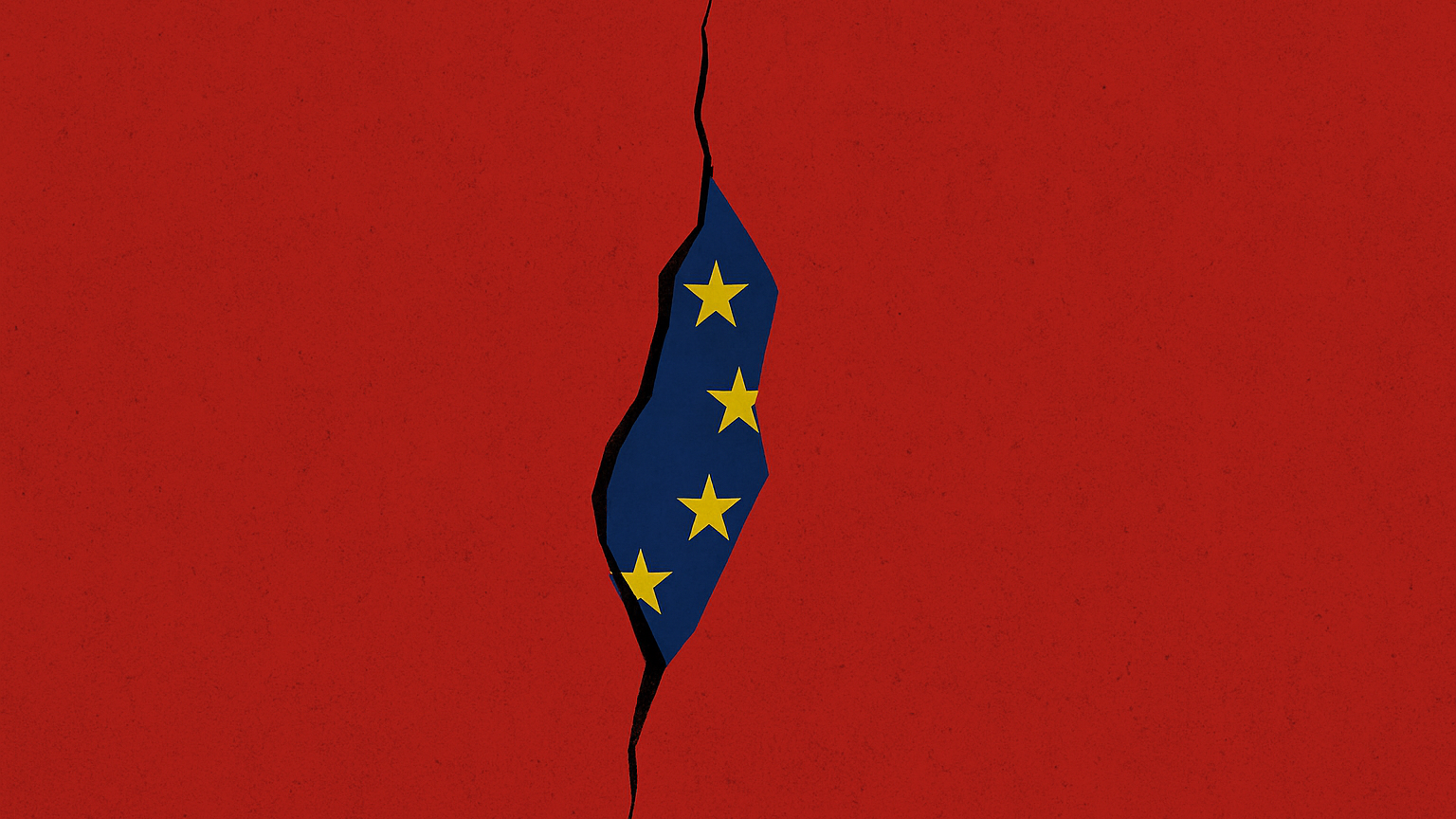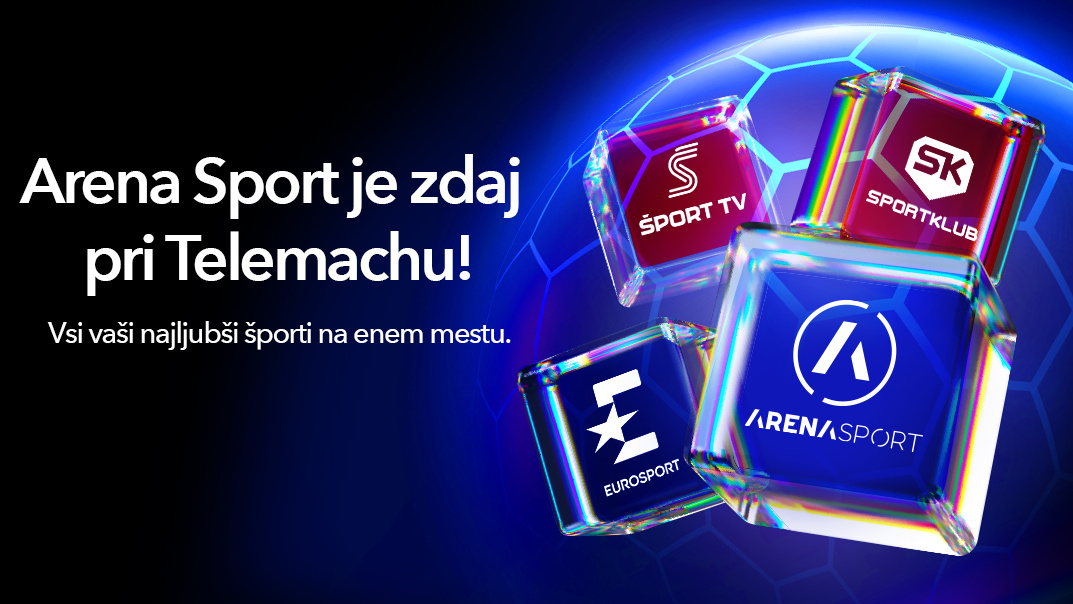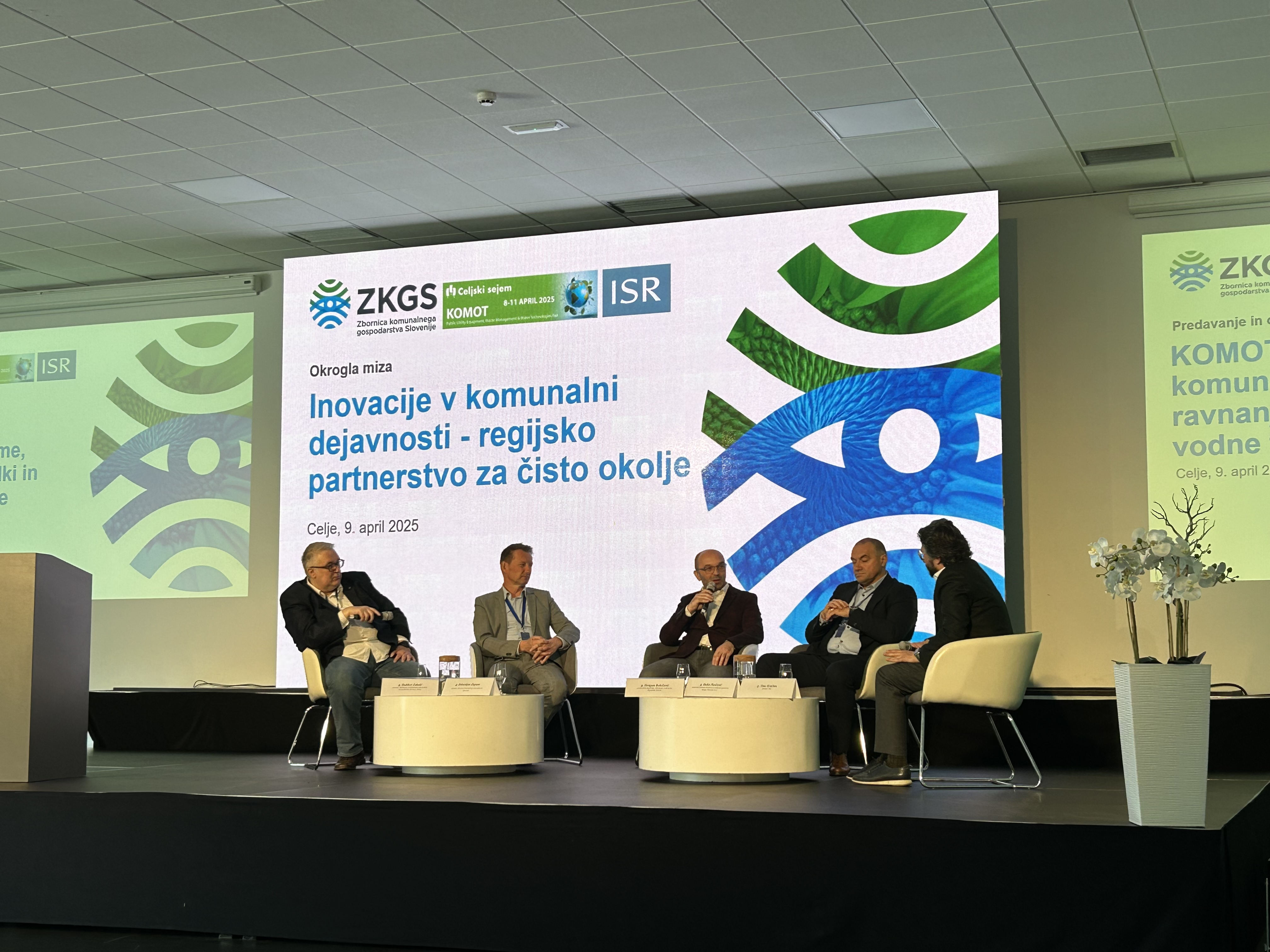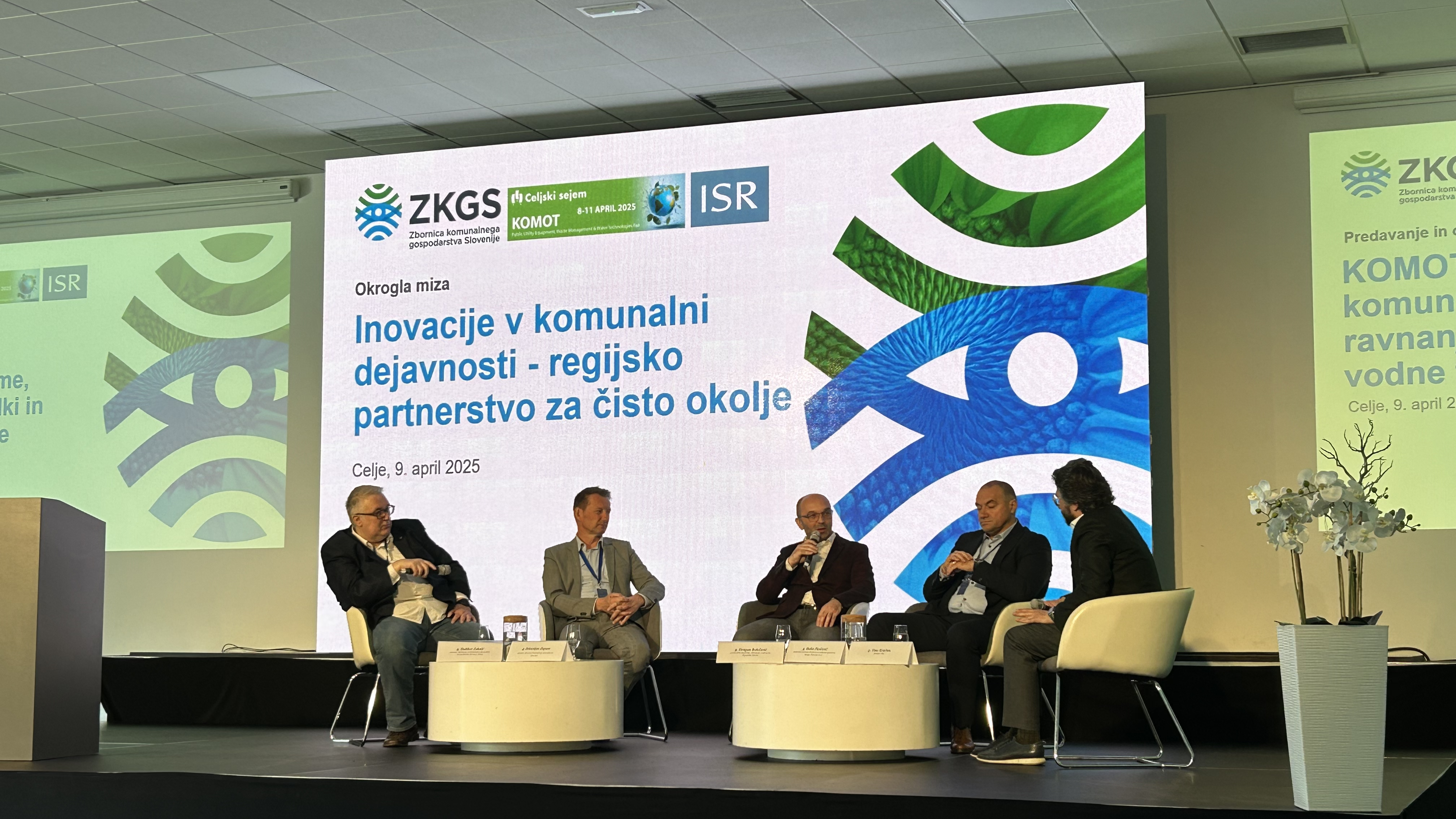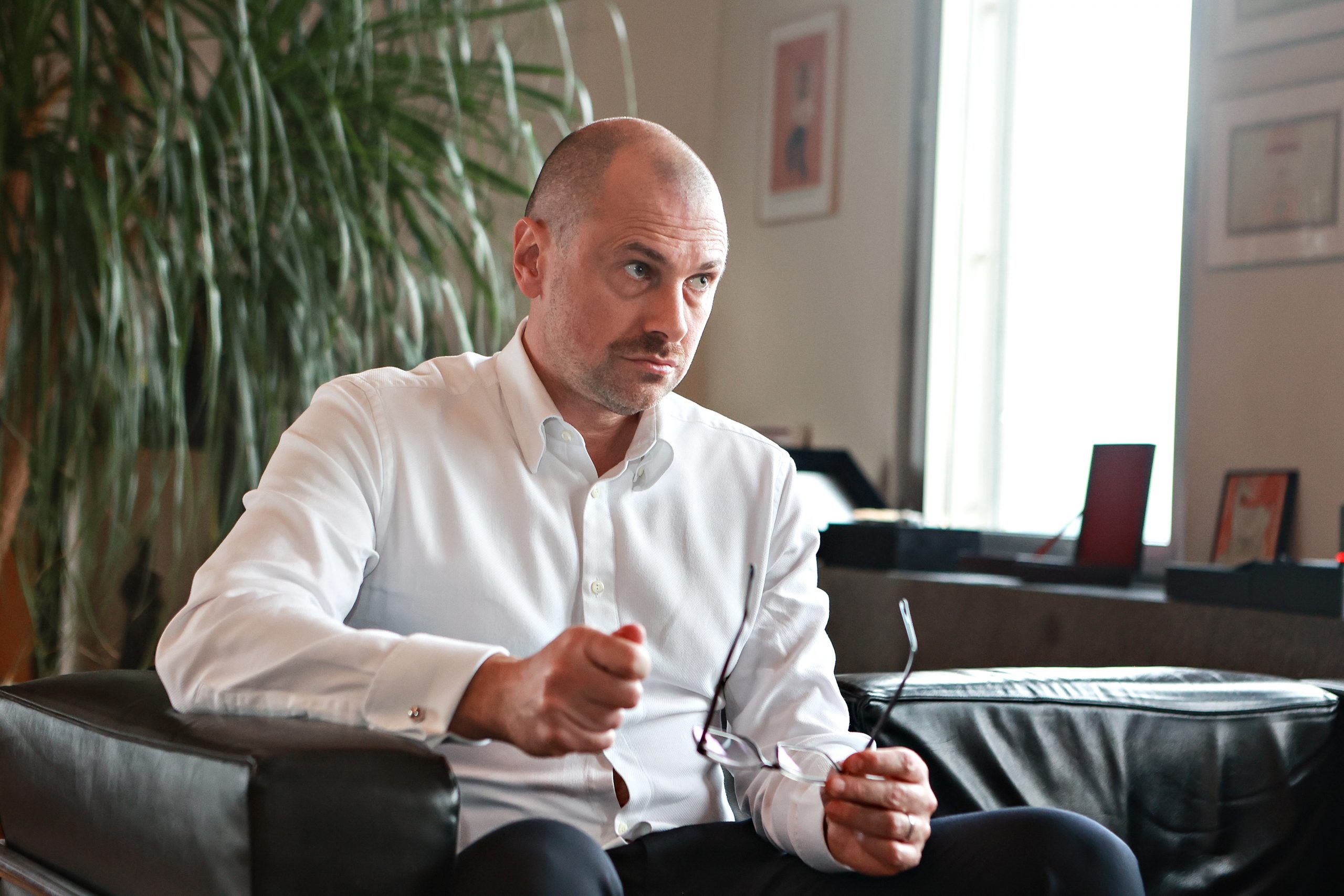Montenegro's rising appeal for team building and weddings
editor
Nestled between rugged mountains and the deep blue Adriatic Sea, Montenegro is emerging as a popular destination for corporate retreats and luxury weddings. From hidden bays to world-class resorts, this Balkan gem is increasingly drawing attention from companies and couples looking for a mix of adventure, elegance, and cultural richness.
Sandra Božič
Montenegro’s rising reputation as a team-building destination is fuelled by its stunning variety of landscapes and activities. “Demand for team-building events has grown substantially in recent years,” says Branka Vujanović, owner of the Coast Weddings & Events agency in Montenegro. “Companies are increasingly drawn to the combination of natural beauty, luxury accommodations, and diverse activities, especially after the pandemic heightened the focus on team connection and mental well-being.”
The country offers a playground for organisations of all sizes, with activities ranging from hiking in the Durmitor mountains to kayaking in the Bay of Kotor. Culinary workshops with Montenegrin specialties have also become a favourite amongst international companies, offering a fun way to spark creativity and camaraderie.
Audra Smith, people operations manager at Scentbird, recently participated at a team-building event with her global team in Portonovi, a luxury resort in the Bay of Kotor. For her, Montenegro was the perfect choice. “Our remote company has team members in over 30 countries,” she says. “Montenegro’s central location and its secretive, unspoiled appeal made it an ideal destination.”
Their experience at Portonovi exceeded expectations, she adds. “The locals were kind and accommodating, and the resort was nothing short of dreamy. We balanced adventure – like ziplining and canyoning – with relaxation at the Portonovi Beach Club,” Smith shares.
The IT sector, pharmaceutical firms, and consulting companies are amongst the industries most frequently organising team buildings in Montenegro, according to Vujanović. Most of them come from Germany, France, and the UK, she adds, but interest is growing from Serbia, Croatia, and even the United States.
A growing magnet for destination weddings
The same picturesque landscapes that captivate corporate teams also make Montenegro a magnet for couples planning destination weddings. Over the past three years, Vujanović notes a 30% rise in bookings for international weddings. Last year, her company organised over 25 weddings for international couples, marking a notable increase compared to previous years.
“Landscapes like the Bay of Kotor and historic towns such as Kotor and Herceg Novi play a crucial role in attracting couples,” says Vujanović. “Many decide on Montenegro after seeing photos of its dramatic coastlines and medieval charm.”
Couples tend to choose outdoor ceremonies with sweeping sea views, often incorporating Montenegrin traditions such as local music and cuisine. But modern touches aren’t left behind. “Most couples prefer a cultural fusion – a blend of contemporary elegance with authentic Montenegrin elements,” Vujanović explains.
The country’s affordability compared to Western European destinations is another advantage. Luxury resorts like Aman Sveti Stefan or Portonovi rival the opulence of the Côte d’Azur but come at a more accessible price point.
Opportunities and challenges
Despite its growing appeal, Montenegro still faces challenges in catering to international expectations. Limited direct flights and local vendors still adapting to global standards can complicate logistics. Vujanović emphasises the need for more conference centres and investments in sustainable tourism to boost Montenegro’s reputation further.
Still, the country’s charm lies in its authenticity and the personalised experiences it offers. From post-wedding boat tours in the Bay of Kotor to corporate workshops in scenic mountain lodges, Montenegro’s ability to blend adventure with sophistication makes it stand out.
As Smith puts it: “Montenegro has us wanting to return – not just for the beauty, but for the memories we created there.”
With global trends favouring employee well-being and unique wedding experiences, Montenegro is well-positioned to capture the hearts of adventurers and romantics alike.
Hearth Summit 2025: a global call to listen, reflect, and reconnect
editor
From June 17 to 20, 2025, the city of Ljubljana became the heart of a global conversation on well-being, community, and transformation. Hearth Summit 2025, a major international gathering organized by The Wellbeing Project, welcomed nearly 1,000 changemakers from over 90 countries. Far from a traditional conference, the summit fused art, science, and deep human connection into a unique space for reflection and renewal.
The Adriatic team
Set against the serene backdrop of venues like Križanke and Cankarjev dom, the summit invited participants to explore the link between inner well-being and systemic change. One of the guiding messages, “Home is not a destination—it’s a state of being”, was reflected in every element of the program. As Aaron Pereira, co-lead of The Wellbeing Project, put it during the opening session:
“The ability to truly listen to others, and to recognize that everyone brings something valuable, is one of the most important skills of our time. This is also the sacred duty of democracy: to find common ground among diverse perspectives and to see wisdom in every form.”
From a symbolic group ritual to a collective walk through the city, the event reinforced the idea that personal well-being can serve as a compass in a world shaken by climate stress, social disconnection, and burnout.
A city in tune with the message
Ljubljana, known for its sustainability and community spirit, offered more than just logistical support—it embodied the summit’s ethos. As Pereira remarked with warmth, “Ljubljana puts the ‘love’ in Slovenia.” From car-free city planning to communal green spaces, the city was both host and model, prompting a deeper question: Are we building cities that make us healthier?
Deputy Mayor Boštjan Koritnik echoed this, saying, “We know how to be kind, curious, and human.” Participants found the city’s hospitality and openness to be a quiet but powerful affirmation of the summit’s core values.
Listening beyond the known
Each day of the summit was crafted as a thematic journey. The final day, framed as an invitation to “listen beyond the known,” featured powerful talks by David Simas (former Obama Foundation CEO) and Cardinal Timothy Radcliffe OP, both urging attendees to move past assumptions and toward deeper human understanding. Their message was clear: only through genuine listening can shared values emerge.
This idea of listening—quietly, attentively, and with courage—was echoed across the summit’s many panels. On stage, thinkers like Kumi Naidoo, Louisa Zondo, and Dr. Jean Bosco Niyonzima spoke candidly about healing through vulnerability and community. Meanwhile, sessions on interfaith dialogue and sustainable cities invited participants to reimagine structures of care and governance from the ground up.
Art as a force for change
Art was not a side event but an equal pillar of the summit experience. From installations like The Mirror of Peace and Dragon’s Nest, to performances such as Aakash Odedra’s evocative dance piece Cut, the artistic programming helped embody the summit’s belief that emotions and aesthetics are essential tools of transformation. As Manuel Bagorro, artistic director of the Hearth Summit, noted, “Artists responded not just with ideas, but with love and hope for the future.”
AI, philanthropy, and the future of values
One of the final sessions explored the ethical frontiers of artificial intelligence and philanthropy. Speakers like Grace Clapham and Sennay Ghebreab said that technology must not erase human values but instead mirror our deepest commitments to care, interdependence, and ecological responsibility. Meanwhile, philanthropists such as Rohini Nilekaniand Laurence Lien called for a shift toward relational giving—where listening precedes action and trust replaces top-down models.
A beginning, not an end
Rather than offering universal answers, Hearth Summit 2025 aimed to open space for sincere questions, shared humanity, and renewed commitments. Its parting message was not a conclusion, but a call:
“To care for human well-being, we must reach beyond what we know—toward a humanity yet to be discovered.”
As the summit closed with spontaneous dance and community joy, it left behind a resonant truth: that healing begins with listening and that real change begins within.
Insurance needs a new language that explains rather than entertains
editor
In a world that increasingly trades complexity for convenience, Slovenia’s insurance leaders gathered last week to make a stark case: maturity still matters.
Andraž Tavčar
The Slovenian insurance industry opened its flagship annual conference this week with an uncomfortable truth. Their sector is not and should not try to be fashionable. Nor, as Sergej Simoniti put it, should it be designed for Instagram.
Simoniti, head of the organising committee and director of Coface Slovenia, used his keynote address to confront a central dilemma. How can a profession rooted in complexity and long-term thinking communicate its message in a culture that increasingly rewards simplicity and spectacle. “If insurance becomes entertaining,” he warned, “we are already beyond what insurance is. We are selling illusions.”
He described a public discourse that has become binary and performative. One that prefers immediacy over substance and indulges a creeping cultural infantilism. “Insurance needs a new language,” Simoniti argued. “Not to make it easier to swallow, but to make it understandable again.”
The mood shifted decisively with the headline lecture by British criminologist Dr Keith Hayward, who painted a sobering picture of societal regression.
“Just as fish rot from the head, so too does infantile politics begin at the top and spread through the body of democracy.”
In Hayward’s framing, Western societies are experiencing not merely a loss of maturity, but a collapse of adulthood as a cultural value. Leaders have become mirrors of their own narcissism. Institutions have surrendered to the logic of applause. In a world that idealises youth and disdains complexity, the very concept of maturity has become suspect.
Hayward argued that the true agent of this shift is not ideology but advertising. Where Orwell once described propaganda as the sound of a stick striking a slop bucket, Hayward updated the metaphor. “The stick is still there,” he said, “but now it is wielded by children.” Advertising no longer appeals to reasoning adults but to consumers conditioned to behave like children. The goal is not to inform but to persuade without resistance.
In this environment, he said, the ideal consumer is impulsive, suggestible and disengaged from consequence. “They want now, not later. They do not lead. They must be led. Freedom will be replaced by managed safety.” In such a world, liberal democracy risks being displaced by what he termed infantocracy. Not tyranny, but a soft regime of reassurance where leaders do not govern but soothe.
Simoniti’s concern was whether insurance can remain immune to these pressures. A field built on risk analysis and responsible decision-making struggles to survive in a marketplace that treats all seriousness as a flaw. In his view, the challenge is not whether to simplify but how to do so without sacrificing integrity.
A panel discussion on marketing explored the same question. Is simplification a necessary tool or a trap. Hayward suggested that the answer lies in history rather than conspiracy. Since the 1960s, he said, commercial forces have absorbed and neutralised the language of resistance. “Irony has become the default mode of expression,” he said. “Nothing can be taken seriously anymore because seriousness makes us vulnerable.”
Simoniti turned the conversation to Slovenia’s own cultural inheritance. He described a society still shaped by its socialist past, with a deep-seated expectation that the state will absorb all risks.
“We do not want freedom because freedom requires responsibility.”
Education, in his view, no longer equips citizens to think critically. “Without expression there is no understanding. And without understanding there is no responsibility.”
He urged the industry to foster a culture of risk literacy beginning with younger generations. “We must teach them not only what risks exist but how they can be managed.”
Yet he cautioned against embracing complexity for its own sake. Accessibility is not the enemy. “The question is how to offer financial security to those with no legal or economic background. It can be done. But not by pretending risk does not exist.”
The conference concluded with a consensus. Insurance cannot afford to surrender to the cultural winds that seek to simplify everything into comfort. Its role is not to flatter. It is to prepare. To do otherwise would be to drift into irrelevance while the future arrives unguarded.
At the top of their game
editor
In considering Croatia’s emergence as a hotspot for the video games industry, one of the most revealing tales might be that of a man who does not actually exist.
Claire Read
Animated scientist Professor Baltazar became one of Croatia’s biggest exports in the 1960s and 1970s; his cartoon capers helping establish the country’s international reputation for animation in the process. In 2025, he’s coming to computers and games consoles. The Professor Baltazar video game, created by Zagreb-based independent studio Gamechuck, will allow gamers to directly assist the beloved scientist as he engineers solutions to problems.
The man shepherding the project is Aleksandar Gavrilović, Gamechuck’s managing director, who believes Croatia’s combined strength in art and science makes the country a natural home for video games.
“We have a whole tradition of great visual art and animation, and we also have a tradition of great engineering. When you combine these two things you get a very good audiovisual sector and especially in games, where engineering is a very important part.”
Figures from the Croatian Game Development Alliance – of which Gavrilović is general secretary – underscore how important video games have become to the country. Last year’s analysis found that more than 600 people were working full-time in the Croatian games industry, and that it was bringing in 56.6 million Euros of revenue.
Admittedly that revenue stat is some way down on pre-pandemic figures. As the new year begins there is optimism it may be about to climb back up, however. The reason? 2025 should be an opportunity to reap the rewards of direct investment by Croatia’s video games studios.
“Usually studios find publishers who fund the development of games, but there has been a worldwide shrinking of available investment in IT and in gaming,” explains Gavrilović.
In 2023 and 2024, a lot of Croatian studios have therefore invested their own funds to build new games. “This means that when they release all these games they will reap the benefits without having to share them with a publisher, which is actually good news in the long term,” says Gavrilović. “In 2025, we are going to see the fruits of all this labour, and hopefully it will be great.”
It is far from the only reason to be optimistic for the Croatian video games industry as the new year dawns. In Novska, a small town 100 kilometres southeast of Zagreb, work is underway on a new nine-hectare Centre for the Gaming Industry. The development cements Novska as the beating heart of Croatia’s games industry. It’s already home to a gaming incubator that has attracted 100 gaming studios since its creation in 2018.
It must be emphasised that those studios were not the first to emerge in Croatia. The internationally-successful Croteam, headquartered in Zagreb and now part of one of the world’s largest independent games publishers, was founded as far back as 1993.
But for Benjamin Noah Maričak, head of video games and new technologies at the Croatian Audiovisual Centre (HAVC), 2018 represented a real turning point for the Croatian sector. The creation of the incubator was one reason for that. The other was a legal change; one which put video games on the same footing in Croatia as film and television.
“HAVC has been the government-backed agency for the audiovisual sector in Croatia since 2008 and we have many [funding] programmes. When the amendment to the law happened in 2018, we implemented video games within our programmes as well,” explains Maričak.
Since 2021, there has been a yearly round of public funding for the development and production of video games. In the first three years alone, 45 games have been supported.
With a background in film and TV, Maričak is particularly excited about opportunities for “transmedia” projects (not least Professor Baltazar’s forthcoming outing; it is one of the projects funded by HVAC).
“[HVAC chief executive] Chris Marcich and I think video games shouldn’t be looked at separately. It’s not: video games will kill film,” he stresses.
On the contrary, perhaps. 2025 will see the release of the first Croatian feature to be filmed in a virtual production studio, the latest film from well-known auteur Antonio Nuić.
“It’s interesting and cool how an indie film auteur has picked up on, hey, we can collaborate with the gaming industry. And the gaming industry also has seen this [collaboration opportunity], especially from the story and narrative side.”
It is just part of what Maričak describes as “a symbiosis” that makes Croatia a natural place for the video games industry.
“The industry stands both on the shoulders of Croatia’s cultural creative industry and its IT and tech industry,” he concludes. “It’s such a place of creative and entrepreneurial possibilities.”
Populist moment denied
editor
A pro-European centrist delivered one of the sharpest rebukes yet to Trump-style nationalism in Eastern Europe. Nicușor Dan’s surprise win over far-right firebrand George Simion in Romania’s presidential runoff marks a high-turnout rejection of “Romania First” populism — and signals a broader regional pushback as the EU’s eastern flank faces mounting democratic pressure.
Maja Dragović
Nicușor Dan’s victory marks a turning point in the fight against Trump-style nationalism across Eastern Europe. Romania’s presidential election on May 18 delivered a stunning reversal that echoed far beyond Bucharest. Centrist Nicușor Dan’s dramatic comeback victory over hard-right nationalist George Simion, winning 54% to 46% after trailing for weeks, represents perhaps the most significant pushback against Trump-inspired populism in Europe since 2016.
The stakes were enormous. Simion, who embraces Donald Trump’s MAGA movement with a Balkan spin and promises to “make Romania great again”, had swept the first round with 41% of votes. His platform of opposing military aid to Ukraine, viewing Putin as non-threatening, and pivoting toward “Romania First” Euroscepticism threatened to isolate the country like Orbán’s Hungary.
Instead, Dan’s victory demonstrates “the positive Trump effect” – where concerns about MAGA-style politics mobilise pro-European voters. The election drew the highest turnout in 25 years, with many viewing it as a geopolitical choice between East and West. Jubilant crowds waving EU flags proclaimed that “Romania begins a new stage.”
This result carries profound implications for EU cohesion. A Simion presidency could have blocked EU support for Ukraine, which requires unanimity, and would have given Hungary’s Viktor Orbán and Slovakia’s Robert Fico a new ally. The outcome influences Romania’s governance and the EU’s eastern cohesion, particularly affecting Moldova and Poland, where similar nationalist-populist forces are gaining ground.
The election’s backdrop remains concerning. It was held after Romania’s Constitutional Court annulled November’s vote over allegations of Russian interference favouring far-right candidate Călin Georgescu, who had surged through a massive TikTok campaign. This populist backlash is driven by Romania’s diaspora of over three million people, who get information via social media.
Yet Dan’s triumph offers a template for countering populist nationalism. His campaign received a crucial boost from a televised debate where his competent, anti-corruption message contrasted sharply with Simion’s divisive rhetoric.
In the Western Balkans, where countries face struggles with authoritarian influence and EU accession processes, Romania’s result offers both hope for democratic resilience and concern about populist nationalism’s enduring appeal. Romania’s election demonstrates that European voters, when presented with a clear choice between democratic stability and populist disruption, can still choose the former.
The long march to Europe
editor
Albania’s ruling Socialist Party has secured a fourth consecutive term for Prime Minister Edi Rama, extending his reign as the longest-serving leader of the country’s post-communist era. Voters chose continuity and a European dream over an opposition marred by infighting and scandal.
The Adriatic Team
The Socialist Party (PS) remains the dominant force in Albania’s politics. Winning 52% of the vote and securing 82 seats in the 140-seat parliament, premier Edi Rama now enters his fourth consecutive term as prime minister – the longest-serving democratic leader since the fall of communism in the early 1990s.
The margin of victory over the opposition Democratic Party (PD)-led alliance, which managed just 34% of the vote and around 50 seats, was more decisive than many observers had anticipated. Internal divisions, Berisha’s corruption charges, and an unsuccessful attempt to replicate the quintessentially American MAGA movement left the opposition looking both divided and dated. Efforts to import political strategies from Donald Trump’s campaign – including the hiring of a Republican strategist – had little traction in an electorate primarily concerned with economic stability and European Union accession.
The Socialist’s campaign, on the other hand, successfully framed the election as a choice between steady progress towards EU membership and a return to the instability of the past. After a decade as a candidate country, Albania began detailed accession talks with the bloc in October 2024, and negotiations on nine chapters relating to the internal market opened just days into the current election campaign. Rama has promised EU accession by 2030, an ambitious timeline that he insists only he can deliver on. Though the path is far from guaranteed, the prospect of EU integration remains a powerful motivator for many Albanian voters.
The opposition, meanwhile, has struggled to present itself as a credible alternative. The PD’s leader, 80-year-old Sali Berisha, has been hampered by significant legal troubles. Indicted for corruption in September 2024 relating to his term as prime minister from 2005 to 2013, he remains barred from entry to both the United States and United Kingdom. His advanced age and legal woes may trigger renewed internal struggles over the party’s leadership.
The fragmentation of Albania’s centre-right forces further undermined the opposition’s chances. Three parties contesting the election included former senior PD figures, dividing the anti-government vote in key electoral districts. The introduction of postal ballots for the large Albanian diaspora, who were allowed to vote from abroad for the first time, also appears to have benefited the incumbent.
As has become customary in Albanian elections, the opposition has rejected the results. Mr Berisha called for protests on 16 May, coinciding with Tirana’s hosting of the European Political Community summit, an event bringing together leaders from across the continent. International observers from the Organisation for Security and Co-operation in Europe noted that while the election was conducted in a “comprehensive and transparent manner,” the Socialist Party’s long tenure in government “created an unfair advantage in power.”
Indeed, after twelve years of Socialist rule, the line between party and state has blurred considerably. State institutions and public employment have reportedly become instruments of political patronage. Internationally, though, Rama’s strong personal ties with European leaders have enhanced Albania’s image as a reliable partner. Hosting the European Political Community summit shortly after the election will reinforce his government’s pro-European credentials. Nevertheless, meeting the rigorous requirements for EU membership by 2030 will demand reforms that could test his political capital.
Albania’s economic growth, although stable, is insufficient to reverse widespread poverty and high rates of emigration. Corruption, although officially targeted by institutions such as the Special Structure against Corruption and Organised Crime (SPAK), remains a persistent problem. The arrest of Tirana’s mayor, Rama’s political ally, underlined that progress on judicial reform remains partial at best.
For now, Albania’s voters have opted for continuity over uncertainty. Whether that decision will bring the hoped-for European future closer remains an open question.
Who's afraid of sustainability reporting?
editor
It doesn’t take a crystal ball to predict how large European companies will be spending the first months of 2025 – namely, in front of spreadsheets, drafting their first mandatory sustainability reports for 2024.
Jure Stojan, DPhil
Dedicated teams will gather information on environmental, social, and governance (ESG) factors, not only from various internal departments but also from external business partners. Even firms too small to employ dedicated sustainability experts may find themselves hit with data requests. While in theory, most small and medium-sized enterprises (SMEs) are exempt from reporting requirements, in practice, larger customers may ask them to provide relevant information.
According to a survey by the website edie.net, most companies currently engaged in sustainability reporting have teams of up to four professionals. The top 9% of firms boast sustainability departments with more than 10 employees. Yet, even these respondents report feeling overwhelmed. How, then, can SMEs be expected to navigate this quagmire?
At ISR, we’ve developed Klimatool, an ESG reporting platform designed to minimize the challenges for SMEs. The process is made as self-explanatory as possible. For additional support, we arrange a phone call to walk companies through the forms. Wherever publicly available information exists, the platform pre-fills the questionnaires. Simple templates help SMEs identify relevant sustainability issues and formulate their policies. Benchmarks allow entrepreneurs to see how they measure up against their competition. Climate risk scores assist in managing their business risks. With just a click, the platform generates drafts of sustainability reports and fills out forms commonly requested by banks. Klimatool is a one-stop solution for all your sustainability reporting and climate risk management needs, tailored specifically to small and medium-sized enterprises. By transforming sustainability reporting from a regulatory chore into a strategic tool, SMEs can gain an advantage in today’s increasingly eco-conscious market.
More sports than ever on Telemach – now featuring Arena Sport, NBA TV, and Premier League TV
editor
Telemach has expanded its TV offering, much to the delight of sports enthusiasts. It is now the only Slovenian telecommunications provider to offer Sportklub, Arena Sport, Šport TV, Eurosport, NBA TV, and Premier League TV all in one place. This makes it the provider with the most comprehensive sports package, delivering a complete sports experience to its users.
From our partners
Telemach users can now enjoy football showdowns from Europe’s top leagues – the English, Spanish, Italian, and French – as well as the world’s oldest football competition, the English FA Cup. Fans can also look forward to the dazzling plays of NBA stars, the regional ABA basketball league, the NHL, the EHF Champions League (men’s and women’s), and the NFL.
These new additions enrich an already extensive lineup of sports channels, which includes the Slovenian national football league Prva liga Telemach, the UEFA Champions League, UEFA Europa League, UEFA Conference League, UEFA Nations League, the German Bundesliga, Formula 1 races, EuroLeague and EuroCup basketball, FIBA competitions, the biggest tennis tournaments, and many other top-tier sporting events.
Arena Sport channels will be available to all EON package subscribers at no additional cost until August 31, 2025.
“Telemach has long been a proud supporter of Slovenian sports, and a provider dedicated to bringing the highest-quality content to our users. Time and again, we’ve seen how passionately Slovenia stands behind its sporting heroes, and now we’re offering fans a truly complete sports experience. With 33 sports channels in the Telemach lineup, there really is something for everyone. Our EON platform has become the center of all sports action,” says Tomislav Čizmić, CEO of Telemach Slovenia.
Content upgrade goes hand-in-hand with technical advancement
At the same time, Telemach continues to invest in infrastructure and is upgrading its broadband services. In all fixed EON packages and across all technologies, internet speeds are being increased up to 1 Gbps. This ensures an even better experience for users watching sports, gaming, or enjoying other digital services.
With the expansion of its sports offering, Telemach is setting new standards in sports broadcasting and, alongside its broadband upgrades, reinforcing its role as a leading provider in the Slovenian telecommunications market.
Shovel-ready or stuck on paper?
editor
Municipal green infrastructure in the Western Balkans suffers less from money than from execution.
The Adriatic Team
Money is rarely the problem. At least not entirely. That was one of the tacit conclusions at a recent regional roundtable held alongside KOMOT, a new B2B trade fair for environmental technologies in Slovenia. Municipal officials, utility directors and infrastructure specialists from across the Adriatic region gathered to discuss the future of public services, and why, despite generous EU funding pledges and ambitious climate targets, progress often falters long before the first shovel breaks ground.
Organised by Slovenia’s Chamber of Public Utilities and the Institute for Strategic Solutions (ISR), the event examined how local authorities might accelerate the green transition without being paralysed by skills shortages, bureaucratic inertia or unworkable financial conditions. As Janko Širec, president of the Chamber, noted: “The exchange of experience and regional dialogue are prerequisites for progress, not afterthoughts.”
Tine Kračun, CEO of ISR, broadened the conversation. The credibility of the EU’s enlargement policy, he argued, rests not just on ticking off accession criteria, but on the capacity of both member states and hopefuls to build resilient, inclusive and sustainable systems that deliver real benefits. “Public utilities are among the most direct points of contact between the state and the citizen,” he said. “They are where innovation and cooperation can have the greatest effect.”
That logic underpins the EU’s new €6 billion Growth Plan for the Western Balkans. Around 37% of the funds are earmarked for climate-related and environmental projects. Yet many in the region remain sceptical as to how far that money will stretch. “We’re still tackling the basics while Brussels talks about upgrades,” remarked Dragan Kelečević of the Waterworks Association of Republika Srpska. His Serbian colleague, Dalibor Joknić, was more forthright, stating that “the money is there. What’s missing are clear mechanisms.”
SID Bank, Slovenia’s state development bank, presented itself as a possible solution to one persistent challenge: the reluctance of commercial lenders to finance long-term public works. Gašper Jež, a specialist in direct financing at SID, stressed that the bank was created precisely to fill that gap. “Our aim is not profit, but support for the development of public infrastructure,” he said.
SID offers uncollateralised loans with maturities of up to 25 years, co-financing schemes in partnership with commercial banks, and the management of EU structural funds. Some financing may also take the form of grants, such as VAT coverage, a crucial benefit for municipalities operating on tight budgets with overstretched personnel.
But even the most favourable credit conditions cannot rescue a project that exists only on paper. “Too many ideas never get off the ground due to weak preparation or a lack of staffing,” Jež warned. The bank now provides advisory support to help local governments shape technically and economically feasible projects.
Slovenia, a former Yugoslav republic turned EU member, sees itself as both a beneficiary and a cautionary tale. “When we first accessed EU funds, we spent them quickly,” recalled Sebastijan Zupanc, director of the Chamber. “Then we realised the money isn’t a gift, it comes with responsibility. Every project needs a clear amortisation model, long-term sustainability and a strategic vision.”
That hard-won insight, Zupanc argued, ought to be shared. In particular, he pointed to a model in which municipalities work hand-in-hand with their own public utility firms throughout the investment cycle. “When local government and its utility provider deliver a project together, the risks are lower and the chances of success far greater,” he said. “It’s a model that has worked for us, and it should be exported.”
Elsewhere, the shift towards a circular economy appears even more distant. Ratko Pavićević, of Montenegro’s Deponija d.o.o., offered a grim assessment. His country has only two sanitary landfills; the rest of its waste still ends up in unregulated sites. “We’ve got a recycling centre in Podgorica,” he explained, “but due to a lack of local processing capacity, all those raw materials leave the country.” Without the necessary infrastructure, he added, the system remains stuck in a loop: collecting, exporting, and dumping, rather than creating local value.
Green funding is no longer in short supply. But without sound governance, cross-border coordination and smart project design, Europe’s lofty environmental ambitions may remain just that. Ambitions, enshrined in a growing stack of well-meaning PDFs.
"Flexibility, creativity, and entrepreneurship are crucial if we are to remain competitive."
editor
Blaž Brodnjak, CEO of NLB, shares his perspective on regional demographics, EU competitiveness, and Europe’s role in the global economy.
Jan Tomše
The Western Balkans are grappling with significant demographic challenges characterised by an ageing population, low fertility rates, and substantial emigration. These trends threaten not only the socio-economic stability of the region but also its political landscape as it seeks potential integration into the European Union. Blaž Brodnjak, CEO of NLB, warns these challenges are directly impacting the quality of life, economic growth, and prosperity in the region. Addressing these issues will require comprehensive policy responses focused on improving local conditions to retain talent and encourage higher birth rates.
“All countries in the Adriatic region, except Slovenia, have experienced significant population outflows in recent years,” Brodnjak notes. “The Balkan basin is emptying. Germany’s relaxed quotas are attracting workers from the region. Slovenia, the only Central European country besides Austria to record population growth over the last 15 years, is now seeing a slowdown. The consequences are dire, he adds. “Younger, more ambitious, hardworking, and braver individuals are leaving, precisely the people who should be driving progress and creating value in the region.”
While the countryside empties, capitals are growing, and people are moving to big cities like Belgrade, Priština, and Skopje, Brodnjak observes. He sees a silver lining in rising wages and expanding telework opportunities, particularly in IT and service industries. “We see positive multiplier effects as well-paid remote jobs boost local economies. For instance, in Serbia, people are earning salaries that are competitive, especially for local standards.” This shift, he believes, could gradually ease pressures and improve living conditions across the region. “Belgrade is a prime example. It’s developing rapidly as a regional capital, with major projects like the renovated Sava Centre attracting international interest.”
Declining birthrates compound demographic risk
No country in the region has implemented a comprehensive natality policy, except Hungary, where [Viktor] Orban has introduced incentives for families with three children. Slovenia has mechanisms to encourage higher birth rates, but they’re insufficient,” Brodnjak notes. Yet, he questions whether financial incentives alone can address the issue. “Housing affordability is a major barrier, but so are the rising expectations of young people. Many delay starting families because they feel the time isn’t right and prefer to enjoy life first,” he says, sharing an example of changing work attitudes: “A young pharmacist applied for a job in a private pharmacy, expecting to work three days a week and use the other two for ‘personal balance.’ This isn’t an isolated case. Young people often live with their parents, work minimally, and prioritise leisure. That’s simply unsustainable.”
China and India are outperforming Europe
Brodnjak emphasises the need for a stronger work ethic to maintain and improve living standards. “The Chinese work 60 hours a week, the Indians 80, while we would like to work 30. Rights are important, but without hard work, we cannot sustain our current standard of living, let alone achieve progress.” He is critical of trends like the ‘right to disconnect’, which he views as a step away from the flexibility and adaptability needed for growth. “The EU must recalibrate its focus. Flexibility, creativity, and entrepreneurship are crucial if we are to remain competitive.” Drawing a comparison to the U.S., he notes how businesses are fleeing California’s restrictive policies for states like Texas. “Europe must learn from this. If we don’t change, we will indeed become an open-air museum – a tourist attraction for visitors from other continents.”
Europe needs a reset
Brodnjak concludes with a clear warning: “Will we recognise the basic challenge of taking responsibility and working hard, or will we continue focusing solely on rights? That is the real question.” Without a shift in priorities, he fears Europe could lose its relevance on the global stage. “If we don’t act now, Europe will soon become a playground for the wealthy, admired for its past but irrelevant to the future.”





